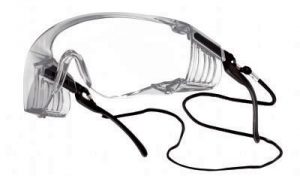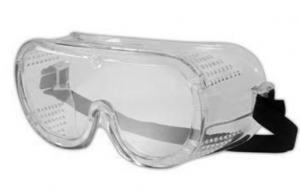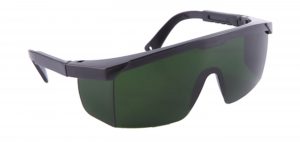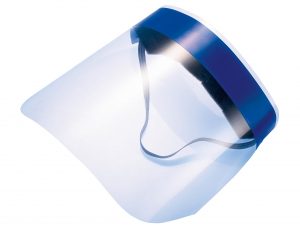Eye protection is a crucial part of an employee’s everyday safety needs. Without this eyewear, an employee can be at risk of minor to severe eye injury – loss of sight.
There are several eye hazards which can be avoided using eye protection:
- UV light
- Gas
- Fumes
- Vapours
- Mists
- Particles
- Laser light
- Chemical splash
Working environments where these hazards are present must require the use of protective eyewear.
Here are the main kinds of protective eyewear:
General Safety Glasses

- The lenses – that normally covers the side eyes – are tough to prevent it from breaking hence, protecting the eyes from possible impact and sharp particles coming from the front and sides of the face.
- Gives little to no protection from liquids or vapours.
- Can be purchased with prescription lenses and even bifocals.
Goggles

Goggles provide a tight seal to the eyes that can protect it from liquid, mist and fumes which a general safety glasses cannot do. There are two types of safety goggles:
Non-vented Goggles
- Blocks gas and chemical splashes/liquid.
- Gives protection against sharp flying particles that may come from different angles.
- Used by those working in the lab, in workplaces with molten materials and hazards of chemical splashes.
Vented Goggles
- Has holes around and buttons embedded into it to allow air pass through.
- Gives protection against sharp flying particles that may come from different angles.
- Not suitable for protection against mist and fumes.
- Can provide barrier against liquid splashes but is not safe for protection from dust, gas and chemical splashes/liquid.
Laser Safety Glasses

- A protective eyewear that can be in the form of a generic safety glasses or goggles.
- Provides protection against hazardous laser eye exposure to safe and permissible levels.
- Can provide different levels of protection depending on the laser wavelength and power that the user is exposed to.
Face Shield
 It provides protection to the eyes and the whole face. Workers also use a face shield on top of a protective eyewear so the goggles can filter splashes, particles, heat and glare that the face shield did not block.
It provides protection to the eyes and the whole face. Workers also use a face shield on top of a protective eyewear so the goggles can filter splashes, particles, heat and glare that the face shield did not block.
Face shields must be used together with goggles or a general safety glasses as it only provides extra protection.
Visit our online store to see our safety glasses, goggles, and face shields.
https://case.edu/ehs/laboratory-safety/personal-protective-equipment/eye-protection
